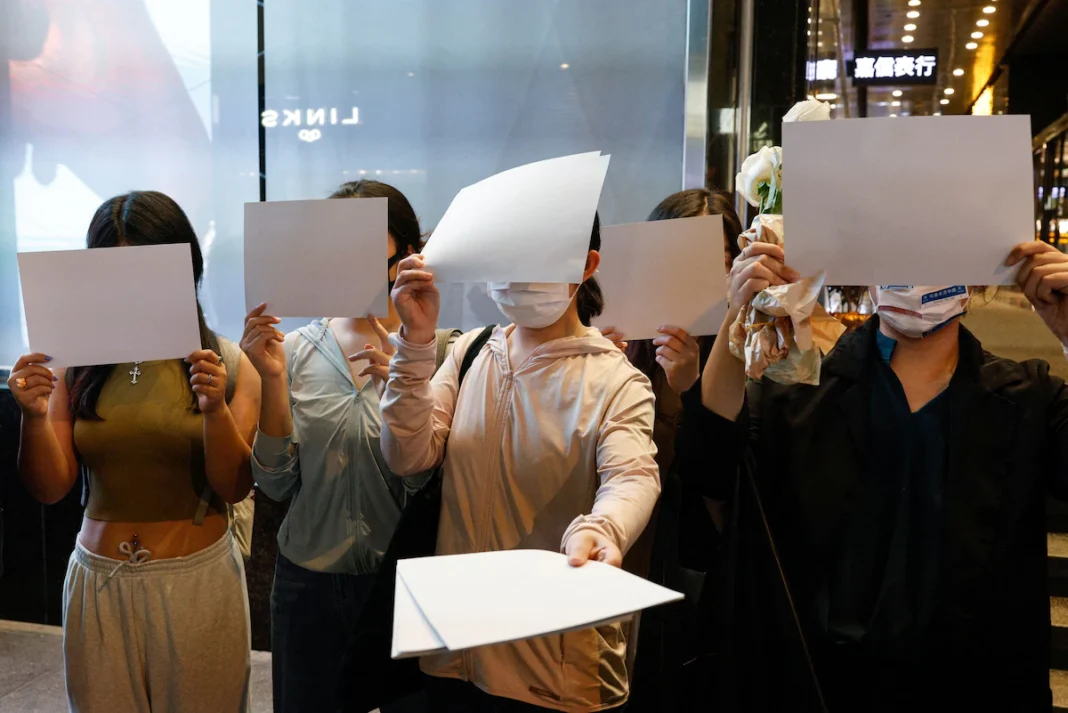China is tumbling into a major covid-19 crisis without a playbook. After more than two years of lockdowns, testing and quarantines to stamp out infections, the “zero covid” approach is at a dead end. President Xi Jinping and the party-state leadership that has staked everything on “zero covid” now face the most difficult of choices for a dictatorship: whether to change, admitting failure, or to stick with a failing policy. Protests erupted in Chinese cities over the weekend, in which ordinary Chinese registered their unhappiness with their country’s strict coronavirus policies — and with the regime itself. A reasonable, responsive government would adjust.
For much of the past two years, China demanded frequent testing for everyone. Those infected were forcibly quarantined, while others deemed close contacts — sometimes whole blocks — were locked down for weeks and months at a time. The approach resulted in low reported infections and deaths. China’s leaders boasted it was superior to the chaotic, decentralized response in the United States, where more than 1 million people have died.
Sign up for a weekly roundup of thought-provoking ideas and debates
But “zero covid” has come unglued. The repeated lockdowns have harmed the world’s second-largest economy, shuttering factories, burdening local governments and frustrating workers. China’s economy grew by 3.9 percent in the year’s third quarter, compared with a year earlier, up from 0.4 percent growth in the second quarter. These are dismal numbers relative to what China is used to. If “zero covid” is not eased, the economy will slump more.
At the same time, people are furious and fed up. Twice in recent weeks, protests have broken out at the huge Foxconn plant making iPhones in Zhengzhou over covid-related restrictions. Then, last week, a fire in a high-rise in China’s Xinjiang region killed 10 people, and rumors spread across social media that the building was under lockdown. Street protests broke out across the country, with some demanding political freedom.
On Nov. 11, the State Council, China’s cabinet, announced a slight easing of covid rules. But infections have soared to a record 40,347 a day. Fresh surges have gripped Guangzhou, Shijiazhuang and Beijing.
Now China is stuck. Last week, authorities were imposing strict lockdowns on districts in each megapolis, but the sudden shift back to closure is creating confusion and seems unsustainable after the protests. A sudden and complete opening would result in widespread deaths and overwhelm the health-care system, especially because China’s elderly population is under-vaccinated. Ideally, China would prepare and launch a mass vaccination campaign, importing the highly effective mRNA vaccines Pfizer and Moderna developed. Over time, China could join the rest of the world in living with the virus, allowing individuals to stay home if sick rather than herding them into quarantine centers and lockdowns.
But after so many months of insisting that the Communist Party and Mr. Xi know best — that rigid “zero covid” is the only correct approach — changing course would imply they erred. China’s economy and its people’s health depend on whether this authoritarian system can respond to the voices of protest, ditch its own propaganda and show flexibility.

